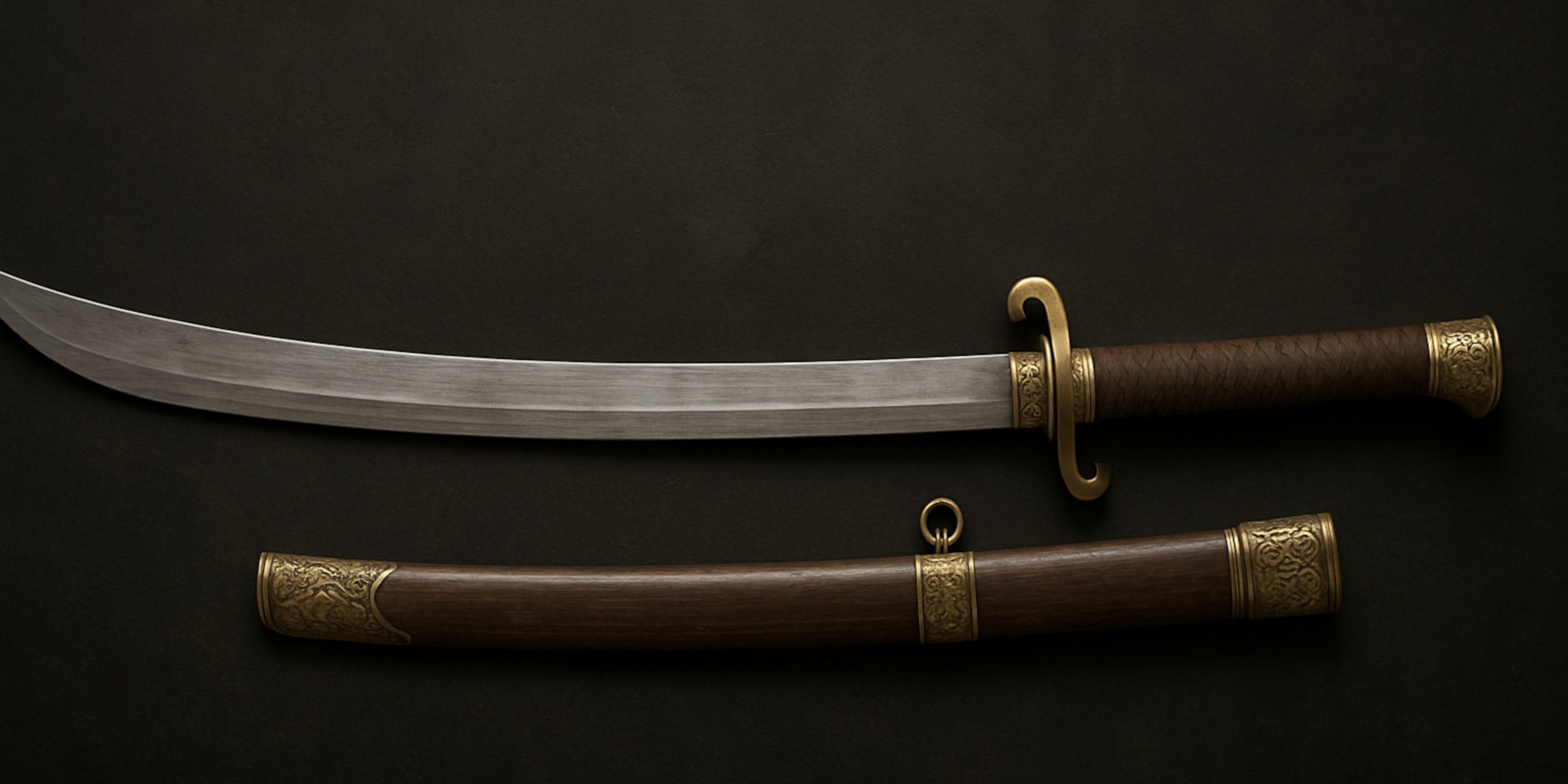
The Zhanmadao, or “horse-cutting saber,” was a formidable two-handed sword developed in ancient China to counter cavalry threats. Its heavy blade and specialised design made it a devastating anti-cavalry weapon, earning a unique place in Chinese military history.
Specifications and Design
Physical Characteristics
- Blade Length: 90–120 cm (35–47 inches)
- Overall Length: 120–160 cm (47–63 inches)
- Blade Type: Single-edged, straight or slightly curved
- Handle: Two-handed grip, typically wood wrapped in cord
- Weight: 2–4 kg (4.4–8.8 lbs)
- Balance: Forward-heavy for maximum chopping power
The Zhanmadao’s design prioritised raw cutting force over finesse, making it ideal for disabling horses and heavily armoured opponents.
Historical Development
Tang Dynasty (618–907 AD)
The earliest references to large anti-cavalry swords appear during this period. Infantry units began adopting heavy blades to counter nomadic cavalry forces.
Song Dynasty (960–1279 AD)
The Zhanmadao saw widespread battlefield use against northern cavalry armies. Specialised infantry units trained extensively with these weapons to break mounted charges.
Ming and Qing Dynasties (1368–1912 AD)
As firearms and lighter weapons became dominant, the Zhanmadao declined in battlefield use but remained referenced in military manuals.
Modern Era
Though obsolete in warfare, the Zhanmadao survives in martial arts traditions and historical collections as a symbol of China’s military evolution.
Combat Effectiveness
Strengths
- Devastating cutting power against horses and armour
- Psychological impact on enemy formations
- Effective in breaking cavalry charges
Weaknesses
- Heavy and physically demanding to wield
- Limited effectiveness in close-quarters combat
- Required extensive training for proper use
Comparative Analysis
| Weapon | Origin | Key Features | Differences from Zhanmadao |
|---|---|---|---|
| Zweihander | Germany | Anti-pike and anti-cavalry use | Heavier with more complex hilt |
| Odachi | Japan | Extreme length for reach | More curved, specialised technique |
| Dadao | China | Broad blade for chopping | Shorter, more versatile in combat |
| Guandao | China | Polearm with slashing blade | Longer reach, different mechanics |
Cultural Legacy
- Military Theory: Cited in classic Chinese military texts like Wujing Zongyao
- Martial Arts: Preserved in some traditional sword forms
- Modern Media: Featured in films, games, and literature as an iconic heavy weapon
Where to View Authentic Examples
- National Museum of China (Beijing)
- Shanghai Museum
- British Museum (London)
- Metropolitan Museum of Art (New York)
Well-made replicas are also displayed in martial arts schools and private collections.
Collecting Guide
Key Considerations
- Authenticity: Verify provenance for antique pieces
- Materials: Look for high-carbon or traditionally folded steel
- Craftsmanship: Examine blade geometry and fittings
- Documentation: Historical records enhance value
Pricing Guide
- Basic replicas: $300–800
- High-quality reproductions: $1,000–3,000
- Verified antiques: $10,000+
Purchasing Advice
- Consult reputable dealers or historians
- Request detailed documentation
- Avoid fantasy-style versions unless for decorative purposes
The Zhanmadao represents a fascinating chapter in Chinese arms development, showcasing the tactical innovation required to counter cavalry dominance. While no longer a practical weapon, its legacy endures through historical study, martial arts preservation, and continued interest in traditional Chinese warfare.
Watch the documentary:



